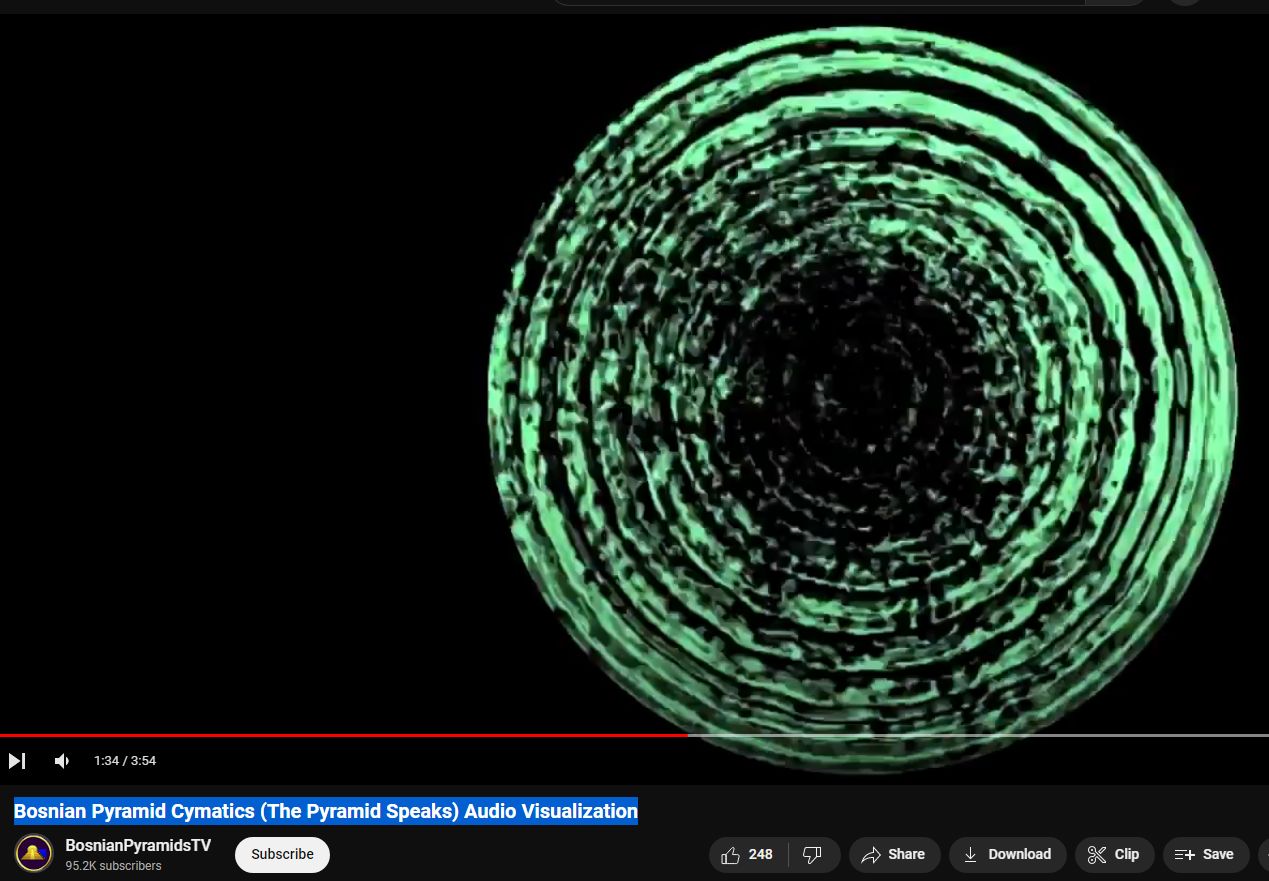Pyramid Cymatics
Top of Sun Pyramid in Bosnia.
28 kHz acoustic vibration emanating from pinnacle to diameter of 4 meters.
Data blocks of ultrasound.
The Mysterious 28 kHz Acoustic Vibration of the Bosnian Pyramid of the Sun
In the heart of Bosnia and Herzegovina lies the controversial and enigmatic structure known as the Bosnian Pyramid of the Sun. Among the many mysteries associated with this pyramid, one of the most intriguing is the reported emission of a 28 kHz acoustic vibration. This phenomenon has captured the attention of both enthusiasts and skeptics, raising questions about the origin and purpose of these vibrations. This blog post delves into the analysis and interpretation of this phenomenon, exploring its potential implications and the debates it has sparked.
Discovery and Initial Observations
The Bosnian Pyramid of the Sun, discovered in the 2000s by Dr. Semir Osmanagić, has been a subject of debate among archaeologists and researchers. Critics argue about the man-made nature of the pyramid, while supporters believe it represents one of the oldest and largest pyramidal structures in the world. One of the more scientifically intriguing aspects is the emission of a 28 kHz frequency detected at the top of the pyramid. This frequency is unusually high for natural geological processes, suggesting an engineered source or a yet-to-be-understood natural phenomenon.
Theoretical Explanations
There are several theories regarding the source and purpose of the 28 kHz vibrations:
1. Advanced Ancient Technology: Some proponents of the pyramid’s artificial origin theorize that the 28 kHz frequency is evidence of an advanced ancient technology used for communication, energy transmission, or even health enhancement. They speculate that this frequency could interact with biological systems or the environment in ways that we do not yet fully understand.
2. Resonance Phenomena: Another explanation could be natural resonance phenomena. The pyramid’s structure could unintentionally amplify certain frequencies produced by natural geological activity, such as water movement or tectonic pressure. However, the consistency and purity of the 28 kHz frequency make this explanation less likely without human modification or enhancement.
3. Acoustic Properties of Construction Materials: The construction materials and the specific geometric design of the pyramid might be factors in producing or amplifying this frequency. This theory suggests that the builders of the pyramid might have intentionally or unintentionally used materials with unique acoustic properties that resonate at specific frequencies.
Scientific and Skeptical Viewpoints
The scientific community remains skeptical about the claims surrounding the Bosnian Pyramids, largely due to the lack of peer-reviewed archaeological evidence supporting the notion that these are man-made structures of ancient origin. Moreover, the detection of such a precise frequency raises questions about measurement methodologies and the possibility of modern interference or experimental error.
Implications for Archaeoacoustics
The field of archaeoacoustics, which studies acoustic phenomena in ancient sites, has shown that many ancient structures have unique acoustic properties that could have been used for various purposes, such as religious rituals or social gatherings. If the 28 kHz frequency at the Bosnian Pyramid of the Sun proves to be neither a hoax nor an anomaly, it could open new research paths into how ancient people might have used sound and frequencies in their architecture.
Conclusion
The 28 kHz acoustic vibration emanating from the Bosnian Pyramid of the Sun remains a mystery wrapped in controversy. While it provides a fascinating topic for speculation and further research, more rigorous scientific investigation is needed to uncover the truth behind these vibrations. Whether the result of ancient ingenuity or a peculiar natural phenomenon, the acoustic secrets of the Bosnian Pyramid continue to challenge our understanding of the past.
This intriguing acoustic feature invites both enthusiasts and skeptics alike to explore the boundaries between ancient knowledge and modern science, encouraging a deeper look into our ancient heritage and its potential technological prowess.
